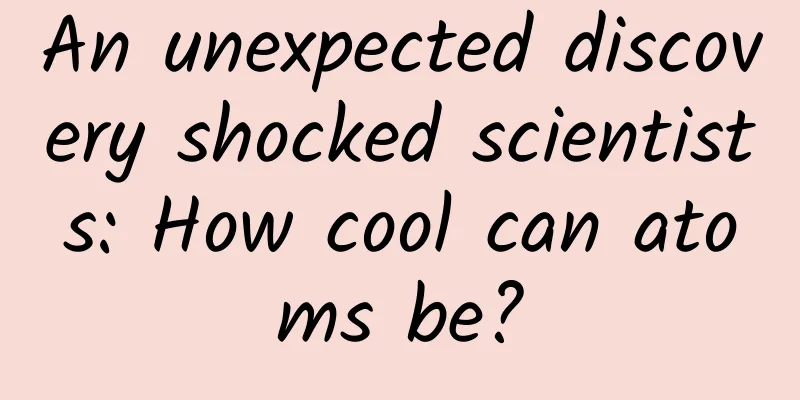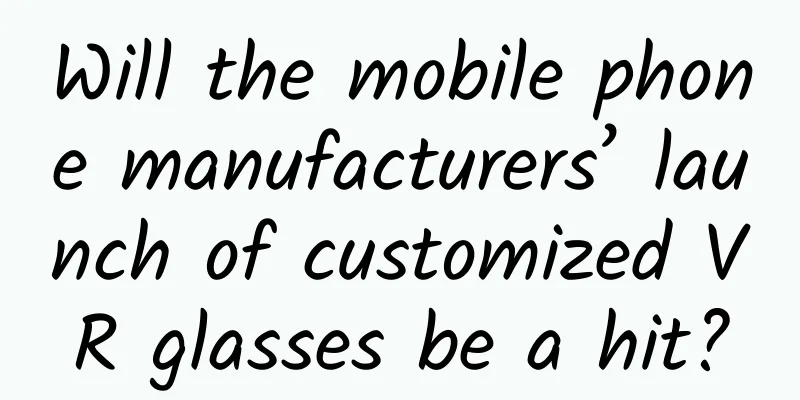An unexpected discovery shocked scientists: How cool can atoms be?

|
I believe that in the previous article "You read it right! Lasers can really cool particles!", everyone has already known that the deceleration process of atoms is the result of the interaction between atoms and photons . In this deceleration process, atoms first absorb oncoming photons and slow down due to the collision; then, the atoms emit a new photon, which is the so-called " stimulated emission " process. Schematic diagram of atoms "absorbing" and "emitting" photons in stimulated radiation (copyright image of the library, reprinting and using may cause copyright disputes) In addition, physicists also apply laser beams to atomic clusters in three-dimensional space in six directions at the same time to achieve the cooling and trapping process of atomic clusters. However, at this time, the atoms are still in a state of random walking and cannot really stop. Therefore, in theory, the final temperature that atoms can be cooled to depends on the balance between Doppler cooling and random heating , which is the " Doppler cooling limit " (usually in the order of hundreds of uK). In fact, the above-mentioned hundreds of uK are already very low temperatures. If converted to the Celsius temperature we are familiar with in our lives, it is equivalent to less than -273.149 °C (that is, less than 0.001 K above absolute zero). However , just when most physicists believed that they had reached the ultimate low temperature of atoms , an unexpected discovery once again refreshed their understanding of atoms ! 01 An unexpected discovery that made history: It was so easy to break through the " Doppler cooling limit"? In 1987, William Phillips' research team at the National Institute of Standards and Technology (NIST) unexpectedly observed that the sodium atoms were cooled to ultra-low temperatures when they applied the "Doppler cooling" scheme to sodium atoms. At first, William Phillips' team thought that it was just an experimental error that caused the temperature measurement of the sodium atom group to deviate. Later, they used three different measurement methods to verify the experimental results, but were surprised to find that the temperature of the sodium atom group after cooling was indeed lower than the theoretical "Doppler cooling limit". This unexpected experimental discovery was strictly reviewed by other peers and published in the top international physics journal "Physical Review Letters" the following year. Thanks to this unexpected discovery, physicists were keenly aware that the original Doppler cooling theory was no longer sufficient to explain this novel experimental phenomenon. Therefore, from 1988 to 1989, the Chu group at Stanford University and the Cohen Tanuj group at the École Normale Supérieure in Paris, France, independently conducted a comprehensive analysis of this new phenomenon. They fully considered the more sophisticated energy level structure inside the atom, the optical polarization properties of the laser beam and other factors in theory, and finally successfully explained this strange phenomenon that broke through the " Doppler cooling limit " . Therefore, physicists began to continuously optimize experimental parameters, trying to further reduce the cooling temperature of the atomic cluster. In 1989, Chu's team further reduced the cooling temperature of the sodium atomic cluster to the range of 15 uK-30 uK. In the same year, the research team of Christopher Westbrook from the National Institute of Standards and Technology also successfully reduced the temperature of the sodium atomic cluster to about 20 uK in the experiment. Then in 1990, French physicists Clairon and Grati and others changed the cooling object from sodium (Na) atoms to a new cesium (Cs) atomic system, and successfully achieved super low temperature for the cesium atomic cluster. So, what kind of secrets are hidden in the atomic system that attract countless physicists to continue to explore its cooling principles in depth and refresh physicists' existing understanding of atoms again and again? 02 Behind the “accidental discovery”—it turns out that we underestimated the familiar atoms! In fact, when we discussed the stimulated radiation process of atoms before, we only considered the transition between the two energy levels of the ground state and the excited state inside the atom. This is the simplest atomic model of a two-level system. Usually, after an atom in the ground state absorbs the impacting photon, an atomic transition process of "ground state → excited state" will occur. Subsequently, the atom will once again undergo the reverse process of "excited state → ground state", thus completing a complete stimulated radiation cycle. Schematic diagram of the "stimulated radiation cycle" of an atom (copyright image of the library, reprinting and using it may cause copyright disputes) However, the real atomic structure is not a simple two-level system. Usually, the ground state of an atom has multiple sub-energy levels with close energies. This structure is called the "hyperfine structure". In addition, each atom has its own unique and complex energy level structure, which further increases the experimental difficulty of driving the atom to complete each stimulated radiation cycle. Therefore, if the hyperfine structure inside the atom is not carefully considered, the atom has a certain probability of falling into the ground state sub-energy level that cannot be cycled again, and this troublesome ground state sub-energy level is also called the "dark state". In order to prevent the stimulated radiation cycle of atoms from "going on strike" due to the obstruction of the "dark state", physicists have to apply additional polarization modulation to the laser beam. In this way, the atoms can complete the resonant transition process of "dark state → excited state", thereby returning to the stimulated radiation cycle and being continuously cooled by the laser beam. Thanks to the successful application of this technology, the cooling temperature of atoms can break through the "Doppler cooling limit" and greatly promote the development of atomic cooling technology, so it is also called the " sub-Doppler cooling " scheme. Some readers may be confused after reading this. What is laser polarization modulation? But it doesn’t matter. Let’s give an example to help readers understand the above “sub-Doppler cooling” process. 03 Sub-Doppler Cooling of Atoms: The Painful " Sisyphus " Cycle Schematic diagram of an atom in the "Sisyphus" cooling cycle (Image source: NobelPrize.org.) Therefore, physicists only need to precisely modulate the polarization state of the laser beam in space, and other parameters, to allow the rubidium atom to continuously dissipate its own energy in cycles. In the eyes of physicists, the rubidium atom is like Sisyphus in Greek mythology, who pushes the boulder to the top of the mountain every day, and can only tirelessly repeat this deceleration process. Therefore, this sub-Doppler cooling scheme that uses the polarization gradient of the laser beam to continuously cool atoms is also vividly called " Sisyphus cooling." Conclusion : Approaching the Cooling Limit of Photon Recoil After the above analysis, it is not difficult to find that after the atoms have experienced the continuous cycle of "Sisyphus cooling", they will still be affected by the recoil force of photons in the spontaneous radiation process. However, compared with simple Doppler cooling, the atoms will complete the cooling cycle of stimulated radiation more efficiently. Generally speaking, the average temperature of atoms after "Sisyphus cooling" is 10 to 100 times lower than the temperature limit of Doppler cooling. In other words, the "Sisyphus cooling" temperature limit of atoms is about a few uK, which is equivalent to less than 0.00 001K above absolute zero . Although atoms have not yet reached a completely static state of absolute zero, such a low temperature has met the needs of most early atomic physics experiments. However, physicists who like to be picky have a persistent belief in their hearts, that is, they hope to break through the cooling limit caused by the recoil of photons again, so as to reduce the cooling temperature of atoms to a new low. Author: Luan Chunyang, PhD, Department of Physics, Tsinghua University Reviewer: Luo Huiqian, Researcher, Institute of Physics, Chinese Academy of Sciences Produced by: Science Popularization China Produced by: China Science and Technology Press Co., Ltd., China Science and Technology Publishing House (Beijing) Digital Media Co., Ltd. References [1] Lett PD, Watts RN, Westbrook CI, et al. Observation of atoms laser cooled below the Doppler limit[J]. Physical Review Letters, 1988, 61(2): 169-172. [2] Dalibard J, Cohen-Tannoudji C. Laser cooling below the Doppler limit by polarization gradients: Simple theoretical models[J]. Journal of the Optical Society of America B, 1989, 6(11):2023-2045. [3] Ungar PJ, Weiss DS, Riis E, et al. Optical molasses and multilevel atoms: Theory[J]. Journal of the Optical Society of America B, 1989, 6(11): 2058-2071. [4] Weiss DS, Riis E, Shevy Y, et al. Optical molasses and multilevel atoms: experiment[J]. JOSA B, 1989, 6(11): 2072-2083. [5] Salomon C, Dalibard J, Phillips WD, et al. Laser cooling of cesium atoms below 3 μK[J]. Europhysics Letters, 1990, 12(8): 683. [6] The Doppler limit. NobelPrize.org. Nobel Prize Outreach AB 2024. Thu. 4 Apr 2024. |
<<: Use grass leaves and tree bark to treat tooth decay? "Ancient dental treatment secret recipe" →
Recommend
Comparison of eight major online storage services after speed limit: QQ is still the best
[[441802]] Friends who often read the big news sh...
Where is the Zhihu advertising backend? Where can I connect to the delivery?
Professional related: Qinggua Media Mobile Market...
Decipher Momo optimization techniques and master pan-entertainment social information flow advertising!
Momo is a pan-entertainment social platform that ...
Chengdu's tea tasting agent with the most repeat customers is announced
Take-out is available in the store, agent: 193-82...
Jack Ma couldn't stand it anymore and used Alipay to park and refuel Citroen C3 AIRCROSS
In 2017, the sales of Dongfeng Peugeot Citroen Au...
How far behind is the iPhone 7 Plus, which was launched more than two years later than Honor in terms of dual cameras?
After Cook took over, Apple's innovation has ...
Case: Analyzing effective promotion strategies in the early stages of a product!
"The successful execution of a plan that mak...
The ranking companies are crying. The App Store has been overhauled and will definitely subvert the way iOS games are played.
The companies that manipulated the rankings (self...
Are sun protection clothes just a waste of money? Cooling, moisture absorption, moisturizing... how real are the eye-catching "labels"?
The sun is scorching, the sun is burning the eart...
Mobile App can monitor phone calls without authorization, with a success rate of up to 90%: the culprit is beyond your imagination
[[316407]] You'll never imagine how unreliabl...
The "Deposit phone bill and get a free phone" benefit is still available
In August this year, the media widely circulated ...
Looking back at the "era" of quantum computing, how did we "weave" the wonderful digital world?
From Turing's original idea to modern microch...
Following the retro style of the "small cube" and enhanced by black technology, the Amazfit Neo watch reshapes the classic
Smart watches come in a variety of shapes. Round,...
Under the double reduction policy, the market for unpopular products with strong demand from primary school students can generate a profit of 300+ per order.
To see how strict the current double reduction pol...
Gu Chuanling-Postpartum Nutrition Course
Gu Chuanling-Postpartum Nutrition Course Resource...









